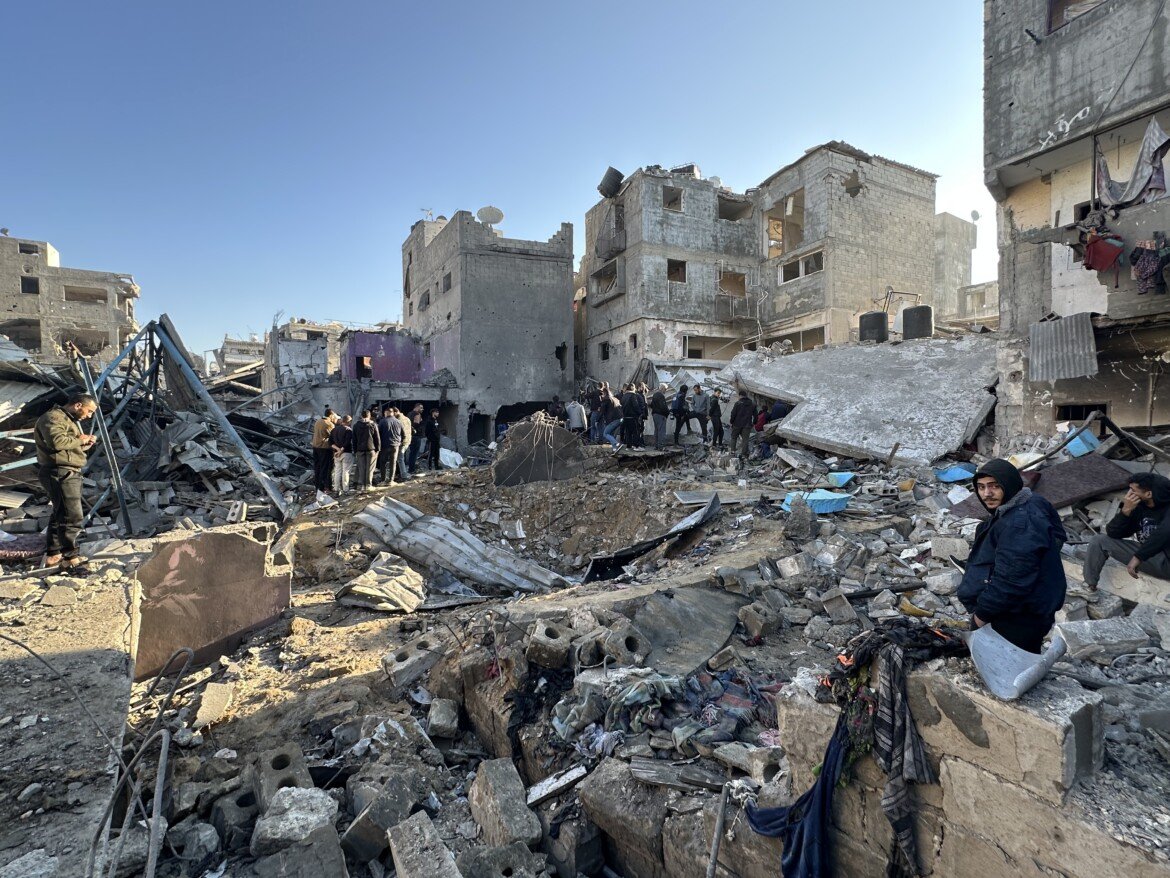Reportage
Gaza’s future lies beneath 42 million tons of rubble
‘No organization and no country can deal with such devastation alone; it will take an enormous international effort. They need the whole world,’ says the Palestinian Children’s Relief Fund. According to the UN, there are 35,000 children who have lost at least one parent.

Fifteen months of massacres shattered Gaza's social map into a million pieces: its family and neighborhood networks, its economic system, its cultural system. And then we get to the two elements that the future of a community is built on, as many have said: health care and education. The foundations on which possible futures could be built are all reduced to rubble.
Before anything else, that rubble will have to be removed. According to UN estimates (current only as of October), Gaza's future is buried under 42 million tons of rubble, 11 times the weight of the Great Pyramid of Giza. The time required to remove it is estimated at 14 years. The costs will be in the range of $280 million per 10 million tons. Nearly 200,000 buildings have been obliterated in Gaza. Removing what's left of them means digging deep into the horror: there's not just dirt underneath, there are bodies. There is also unexploded ordnance.
“Before one can think about rebuilding the hospitals, the rubble must be removed. The bodies must be recovered. The sewers must be rebuilt. The roads must be rebuilt. Trucks can’t move without roads,” says Vivian Khalaf, the president of the Palestine Children's Relief Fund (PCRF), an NGO founded in 1992 in the United States which has been the largest of those operating in the Strip since well before October 7, 2023. Khalaf was recently in Italy along with Lubna Musa, PCRF’s managing director based in Ramallah, and Suhail Flaifl, PCRF’s medical missions director, from Gaza City.
The ceasefire made fighting in Gaza a thing of the past, but it will not do so with death, or the collective and individual process of mourning and processing of loss, both human and social, which Gazans have had to somehow put on hold until now. There was the more urgent matter of survival.
“You can rebuild infrastructure,” says Musa, ”but how do you rebuild people? The missing limbs, the lifelong wounds, the shattered mental health, the loss of one's family. Before October 7, PCRF was following 400 orphans in Gaza. Now we are following 5,000. Some are so young that they can’t tell us their own names. We don't know whose children they are.” According to the UN, there are 35,000 children who have lost at least one parent.
“No organization and no country can deal with such devastation alone; it will take an enormous international effort. They need the whole world,” Musa adds. “We at the PCRF are ready, from day one of the ceasefire,” Flaifl stresses. He managed to get out of Gaza in May, along with his wife and three children.
They were living in Gaza City's al-Rimal neighborhood; on October 13, 2023, they received the first of countless evacuation orders and fled south. They never made it back: “We paid so much money to the Egyptians. We are among the lucky few who could do that. When we arrived in Egypt, there was nothing waiting for us. The first thing we did was buy clothes, as we had nothing with us.”
Before Suhail fled with his family on October 13, he was accompanying two U.S. doctors in Khan Younis, members of one of the hundreds of international missions the PCRF has brought to Gaza over the years. These top-level missions brought modes of treatment that had never been seen before in Gazawi hospitals, such as the first pediatric oncology ward at Rantisi Hospital. The Israeli offensive changed their priorities: “In a few days we realized that this was not a war like the previous ones,” Musa tells us. “We became an organization for emergency medicine.”
Of the NGO’s 50 Palestinian members, two were killed and five fled to Egypt. All the others are displaced. They have continued to work, in hospitals and makeshift clinics where they offer seemingly “superficial” medicines and therapies: treatment for the chronically ill, dental care.
The World Health Organization has used PCRF’s medical centers to administer polio vaccines, while international teams have focused on northern Gaza, under siege since early October: “They mainly deal with neurosurgery and reconstructive surgery.”
The international missions have never stopped, but it has become an obstacle course: “The green light from Israel for foreign doctors and nurses is given immediately, on the same day,” Khalaf says, “Sometimes it happens that it is denied at the last moment. It also happens that the team is broken up: the nurse gets approved, but not the doctor. And it also happens that Israel delays permission to exit. This crisis is not about logistics, it is a political one.”
This is what the thousands of humanitarian trucks stopped in Egypt have signaled for months, stranded by a bureaucracy that camouflages a system designed not to work under the smokescreen of procedures. Now one has to think about the aftermath, and the return. Suhail is thinking about it: “I have never wanted to leave Gaza. Now I'm waiting to see it again.”
Originally published at https://ilmanifesto.it/sul-futuro-di-gaza-pesano-42-milioni-di-tonnellate-di-macerie on 2025-01-16
